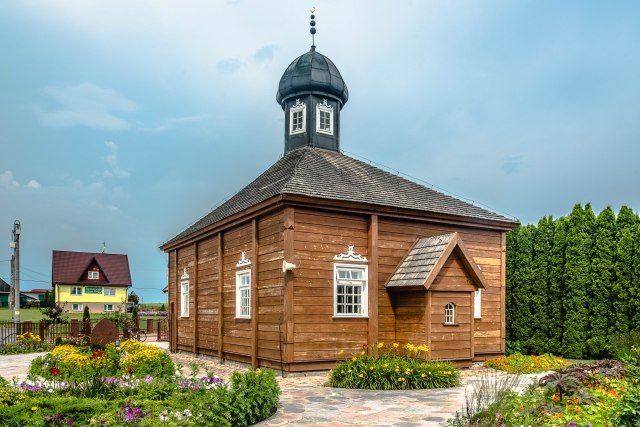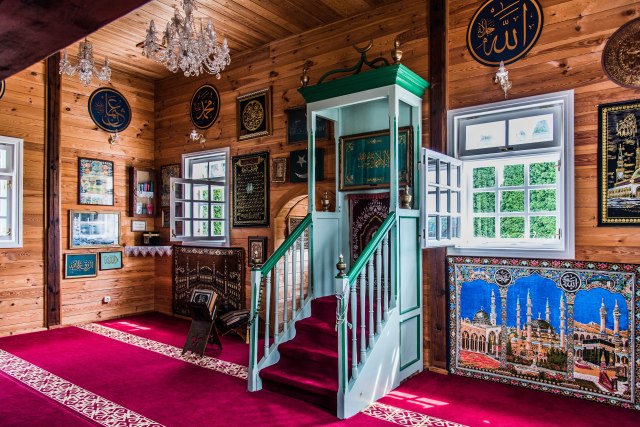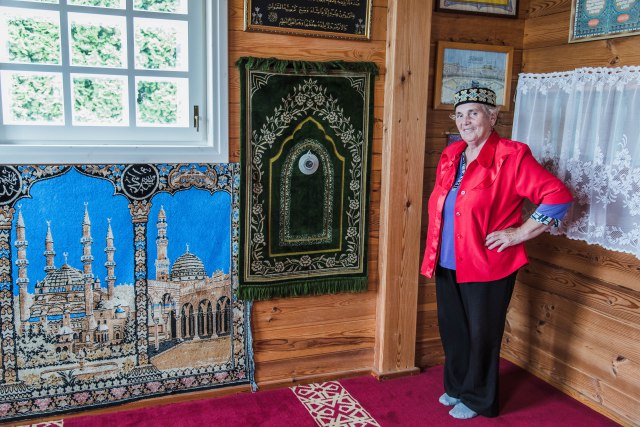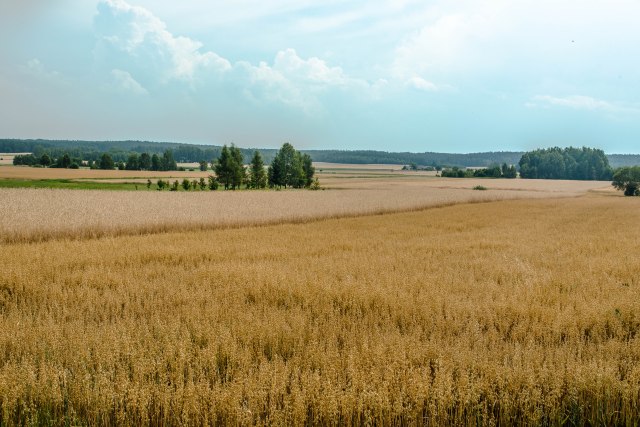 The mosque at Bohoniki is one of the last places of worship of the Lipka Tatar community which still survives as it has since the late 14th Century in what are now the borderlands Poland, Lithuania, and Belarus.
The mosque at Bohoniki is one of the last places of worship of the Lipka Tatar community which still survives as it has since the late 14th Century in what are now the borderlands Poland, Lithuania, and Belarus.
The mosque was built at the turn of the 19th and the 20th centuries, probably in 1873 to replace an earlier mosque destroyed in a fire. During World War II, the mosque was destroyed by the Nazis, who organised a field hospital on the site. After 1945, the mosque underwent several renovations several times. In 2003, the roof was renovated; the tin roof was changed to shingle roof. In 2005 a general renovation was carried out.
It is a simple wooden building built on a rectangular plan with dimensions of 11.49 m × 8.03 m. It has been restored with the help of the Polish and Turkish governments and the European Union.

This is the minbar, a pulpit in any mosque, where the imam stands to deliver sermons, as well as delivering a wider range of readings and prayers.Towards the end of the 14th century, Muslim Lipka Tatars were invited into the Grand Duchy of Lithuania by Vytautas the Great. These Tatars first settled in Lithuania proper and later spread to other parts of what became the Polish–Lithuanian Commonwealth. While maintaining their religion, they united their fate with that of the mainly Christian Commonwealth. From the 1410 Battle of Grunwald onwards the Lipka Tatar light cavalry regiments participated in every significant military campaign of Lithuania and Poland.
The Lipka Tatar origins can be traced back to the descendant states of the Mongol Empire of Genghis Khan – the White Horde, the Golden Horde, the Crimean Khanate and Kazan Khanate. They initially served as a noble military caste but later they became urban-dwellers known for their crafts, horses and gardening skills. Throughout centuries they resisted assimilation and kept their traditional lifestyle. While they remained very attached to their religion, over time however, they lost their original Tatar language and have for many centuries spoken the Polish, Lithuanian or Belarusian of their neighbours.
Today there are about 10,000–15,000 Lipka Tatars in the former areas of the Polish–Lithuanian Commonwealth. Their numbers have declined through intermarriage with the overwhelmingly Christian local population and through emigration to larger cities or to the United States, where Lipka Tartars built New York’s first mosque, in Brooklyn, in 1928. The American actor Charles Bronson is of partial Lipka Tatar ancestry.

This lady is remembered by pretty much everyone who has been to the mosque in Bohoniki. She doesn’t speak English, or despite the funding their government gives the community, Turkish (I tried). It somehow doesn’t seem to matter – she is an enthusiastic evangelist for the culture and heritage of her Lipka Tatar community, for centuries the northwesternmost Muslim community in Europe and the last survivors of Genghis Khan’s westernmost incursions.
Intermarriage and emigration has decimated the community – perhaps 1,300 Lipka Tatars remain in Poland, and maybe 8,000 others in neighbouring parts of Belarus and Lithuania.
There is a steady trickle of tourists, and funding from the EU and the Turkish government for their mosque and community centre. The Turks are particularly fascinated by these improbable and distant ethnic cousins.

Outside, the great plain surrounds this tiny hamlet, just 10 kilometres from the Belarussian border, like a great land ocean. The plain starts a long way to the west – perhaps in Normandy, perhaps in Bedfordshire, depending on how you measure it; in the other direction, it stretches all the way to the Urals. From the vantage of Eastern Poland, it stretches forever in either direction. The land undulates gently, almost like a gently rippling sea.
Such merits as this article possesses are largely a result of helpful articles on the English and Polish Wikipedias.





